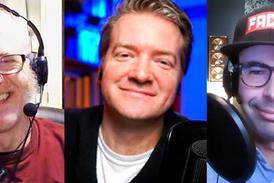The search beyond science: How an inquisitive atheist found God through astrophysics

Analytical scientist Dr Hugh Ross had been searching for answers about the origin of the Universe since he was a child. He found them in the place he least expected – the Bible. Jana Harmon shares his story here
There are big questions about the Universe. How did it all begin? Why does the Universe appear to be so fine tuned for life? How did humans come to be? The answers to these and other questions are but a few of many that not only help us understand the bigger picture of reality, they also help us to understand ourselves. But how do we answer these big questions?
As an inquisitive atheist and astrophysicist, Hugh Ross searched for… (Register to reas the rest of the article)
Want to read more? REGISTER FREE for Premier Unbelievable? Membership!
If you are already a Member or have an account with another Premier website, you can SIGN IN now.
Register for a FREE Premier Unbelievable? Membership
Be equipped to confidently defend your Faith, tackle untruths and demonstrate that the Gospel is good news for everyone.
Membership includes unlimited access to the website, a weekly newsletter, bonus content and much more.
To continue reading REGISTER FOR FREE MEMBERSHIP






















